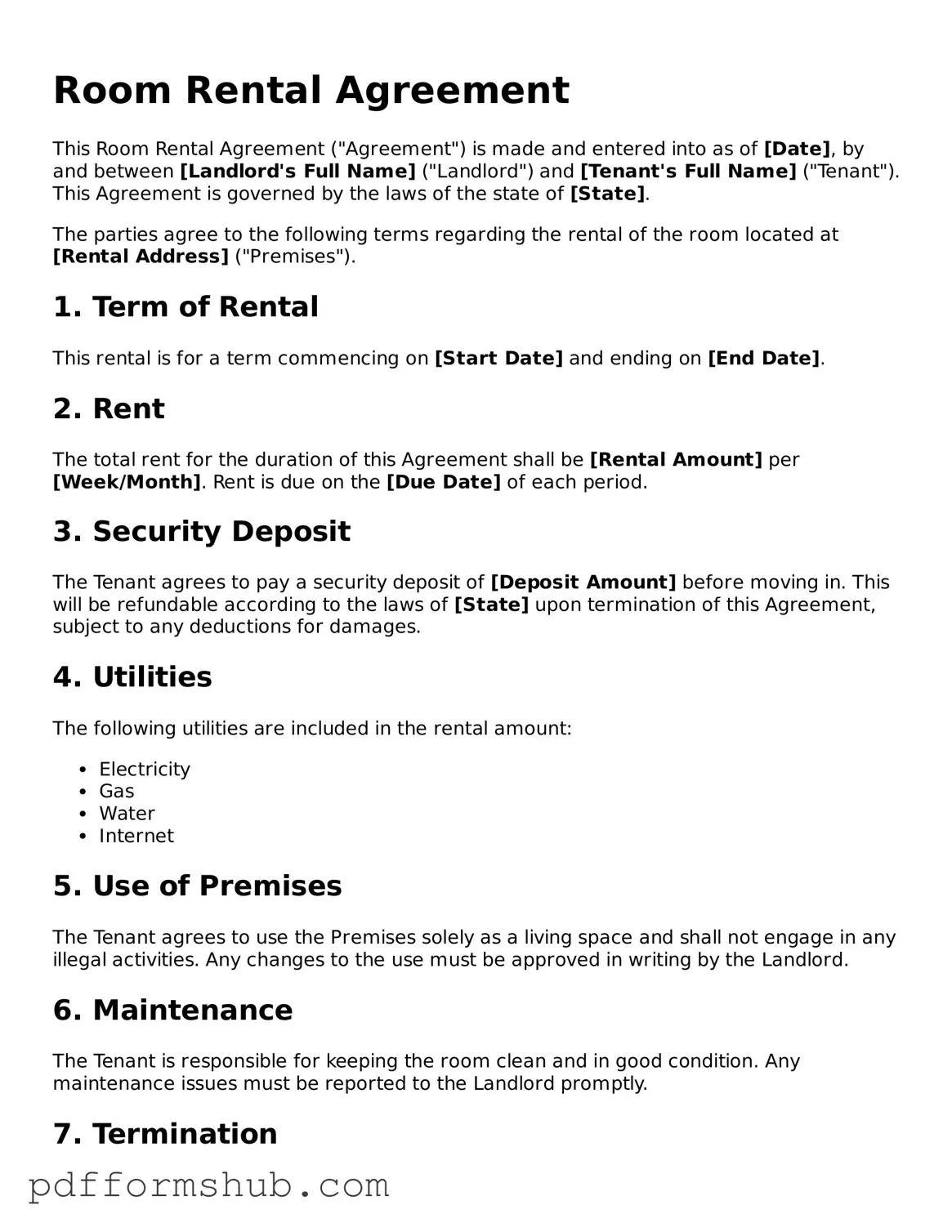Valid Room Rental Agreement Form
A Room Rental Agreement is a legal document that outlines the terms and conditions between a landlord and a tenant for renting a room. This agreement protects both parties by clearly defining their rights and responsibilities. Understanding this form is essential for a smooth rental experience.
Ready to get started? Fill out the Room Rental Agreement form by clicking the button below.
Customize Form
